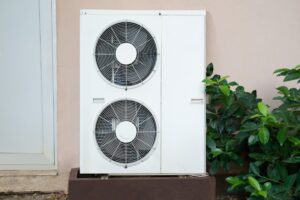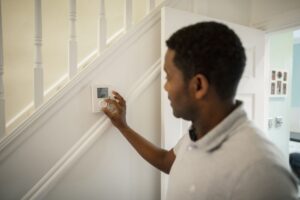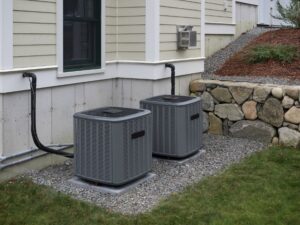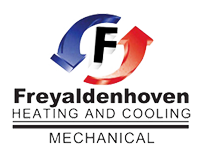How Furnace Efficiency Ratings Are Determined in Maumelle, AR
In 1987, the National Appliance Energy Conservation Act came into being, making it mandatory for all new furnaces to be, at minimum, 78% efficient. This was the onset of the popularity of the high-efficiency furnace since, before the new requirement, it was common for furnaces to allow as much as 40% of heated air to escape the home. Read on to learn how you can determine furnace efficiency ratings for your system in Maumelle, AR.
What Is Furnace Efficiency?
The efficiency of a new furnace is one of the most significant points to consider when preparing to upgrade your home heating system. Before the National Appliance Energy Conservation Act, older model furnaces did not require any rating.
Therefore, you may have no way of determining your current system efficiency, depending on its age and design. As for newer models, their efficiency determination uses the Annual Fuel Utilization Efficiency (AFUE), which calculates the amount of energy input by the percentage that the system converts to heat or BTUs.
Determining Furnace Efficiency Ratings
After determining the amount of energy input, converting that into a percentage and then into BTUs, you can then calculate the furnace efficiency rating. For example, a furnace with a high energy input percentage is a high-efficiency model and is capable of reducing your utility bill by as much as 50%.
In the most up-to-date figures, the majority of furnaces must have a minimum AFUE rating of 80%. Furnaces that operate at a level of 90% to 98.5% AFUE are high-efficiency systems.
These furnaces operate via a pair of heat exchangers encased in a secured combustion chamber with a condenser unit that cleans exhaust gases. Any moisture present gets stripped before the gases enter the second heat exchanger to ensure maximum efficiency.
Efficiency Ratings of Older Furnaces
In some older model furnaces, there may be no way to determine ratings as government rating standard requirements only apply to newer heating systems. Some older models of furnaces feature a pilot light that must continuously remain lit. These furnace models are generally between 56% to 70% efficient and often require professional maintenance to work as efficiently as possible.
Quick Guide to Furnace Efficiency
Another means of identifying system efficiency besides its AFUE is to compare its features. You can do so with the following guide:
Low efficiency rated furnace (older model):
- The pilot light must stay lit continuously
- Flow of combustion gases comes via a natural draft
- AFUE =56% to 70%
Mid-efficiency rated furnace:
- The flue pipe is small in diameter
- There is no pilot light (features an electronic ignition)
- The design is lighter in weight and more compact, which reduces loss during cycling
- AFUE =80% to 83%
High-efficiency rated furnace:
- Sealed combustion chamber
- Features double heat exchangers for increased efficiency
- AFUE= 90% to 98.5%
Your Lowest Furnace Efficiency Requirements
All homeowners should know the lowest furnace efficiency requirements for their type of residence to ensure they’re in compliance and know what type of system to look for when it comes time to replace their old one. Furnaces that are non-condensing in design have a government-regulated efficiency level requirement of 78%, except oil-powered heating systems found in mobile homes.
These must have an efficiency rating of 75%. Further efficiency requirements include gas-powered hot water boilers (82%), electric (78%), oil-powered steam boilers (82%) and oil-powered hot water boilers (84%).
Call Freyaldenhoven for Your HVAC Needs
It’s normal to have questions about furnace efficiency and your home HVAC system. Our expert HVAC technicians are on hand when you need them with 24/7 emergency services.
If you need help determining your heating system efficiency rating, or if you are looking to install a new heating system, contact us at Freyaldenhoven Heating and Cooling. We provide comprehensive heating, cooling, geothermal and indoor air quality services.
Image provided by iStock
You May Also Like

Identifying 4 Summertime Heat Pump Problems in Maumelle, AR
Heat pumps are one of the most efficient HVAC options for homes in Maumelle, AR. Like all machines, however, they can sometimes… Continue Reading Identifying 4 Summertime Heat Pump Problems in Maumelle, AR…

Why Does My Heat Pump Blow Hot Air in Cooling Mode in Maumelle, AR?
Heat pumps can both heat and cool your Maumelle, AR home. This means that you can flip the switch when the seasons… Continue Reading Why Does My Heat Pump Blow Hot Air in Cooling Mode in Maumelle, AR?…

Is Now the Time for AC Replacement in Maumelle, AR?
Maintaining a comfortable temperature in your Maumelle, AR home this summer is important, especially since temperatures rise dramatically during the summer months.… Continue Reading Is Now the Time for AC Replacement in Maumelle, AR?…

